Europe again postpones a firm date for the introduction of the Entry/Exit System.
By: Ray Rackham
October 11, 2024
This article was originally published on August 21, 2024 updated on October 11, 2024 to reflect a further delay to the EES start date.
After protracted delays, and many months of speculation, the EU Commission confirmed that the new Entry/Exit System (EES) will commence operations on November 10, 2024—a month later than previously anticipated. However, this date was subesquently scrapped after France, Germany, and the Netherlands all stated that they were not yet ready for launch.
No new start date for the border system was provided, but the EU Commissioner for Home Affairs appeared to open the door to a phased implementation as opposed to a 'big bang' approach, which may see certain countries introducing EES before others.
EES will remove physical passport stamping for short-stay visa and visa exempt travelers into the 29 European countries that are participating in the system. The aim of EES is to create a seamless and digitized border experience, requiring travelers to submit biometric information and provide travel details when crossing any EES country’s external border.
EES is one part of a range of updates to Europe's border-crossing rules. ETIAS, Europe's electronic travel authorization programme, is scheduled to come into effect in 2025.
It is imperative that corporations and individual travelers alike become aware of the new requirements prior to November 10 to limit potential disruptions to travel as the new system launches. CIBT is working closely with authorities and organizations responsible for implementation of EES, so that travelers can be well-prepared for the changes. We will continue to update as further developments emerge.
Understanding the Entry/Exit System (EES): What should travelers expect?
EES is part of the European Union's broader effort to enhance the security and management of its external borders. This system is designed to replace the traditional passport stamping process with a fully digitized system, capturing detailed information about non-EU nationals entering and exiting the Schengen Area. EES will record biometric data, such as fingerprints and facial images, alongside travel details, which will be securely stored in a central database.
How will EES change the travel journey?
For travelers, EES will introduce several key changes:
Biometric data collection
Upon entering and exiting an EES country, travelers will need to provide biometric data. This means that in addition to showing a passport, travelers will have their fingerprints scanned and facial images captured at border checkpoints. This step, while intended to be swift, will require travelers to be prepared for potential delays, especially during the initial rollout phase.
Automated border controls
Many border crossings will transition to automated gates equipped to handle biometric verification. This system aims to streamline the process and reduce wait times, but travelers should be aware that new procedures can lead to longer queues initially as both travelers and border officers adapt.
Increased data security
EES will enhance the security of the border control process by ensuring that all entries and exits are accurately recorded. This will help combat issues such as visa overstays and improve overall border management.
Implications for overstays
The EES will automatically calculate the length of stay for travelers, making it crucial for travelers to comply with visa conditions. Overstaying, even by a small margin, will be immediately flagged in the system, potentially leading to fines, entry bans, or other penalties.
Preparing for the transition
Given the significant changes that EES will bring, it is essential for both corporations and individual travelers to prepare well in advance:
-
Stay informed: Travelers should keep up-to-date with the latest information regarding the EES and understand the specific requirements of the system.
-
Allow extra time: When traveling to or from Europe, particularly during the initial months after EES implementation, travelers should allow extra time at border controls to accommodate the new procedures.
-
Check documentation: Ensure that all travel documents, including passports and visas, are up-to-date and compliant with EU regulations. This includes ensuring that biometric data is accurate and current.
-
Engage with travel management services: Corporations and frequent travelers should consider partnering with professional travel management services, like CIBT, to navigate these changes efficiently. These services can provide guidance, updates, and personalized assistance to minimize disruptions.
By understanding EES and proactively preparing for its implementation, travelers can ensure a smoother transition and avoid potential complications as they navigate the new European border control landscape. CIBT is committed to keeping you informed and supported throughout this transition, ensuring that you travel with confidence.
Read Next: Israel introduces new electronic travel authorization system
CIBTvisas Monthly Update
Get the CIBTvisas Monthly Update for the most recent information on travel requirements and consular closings.
